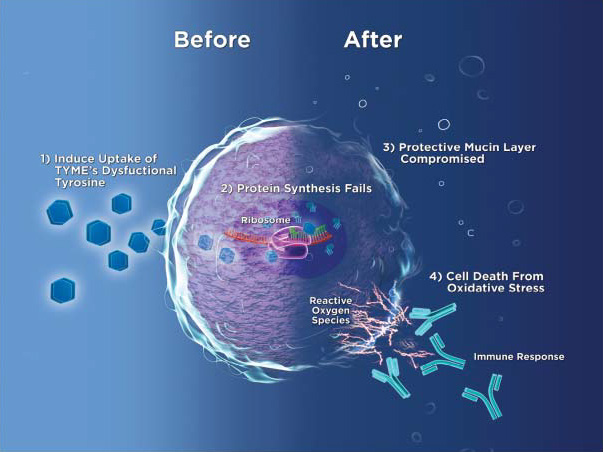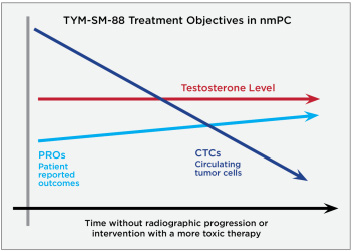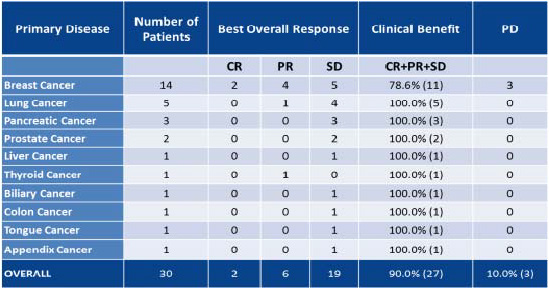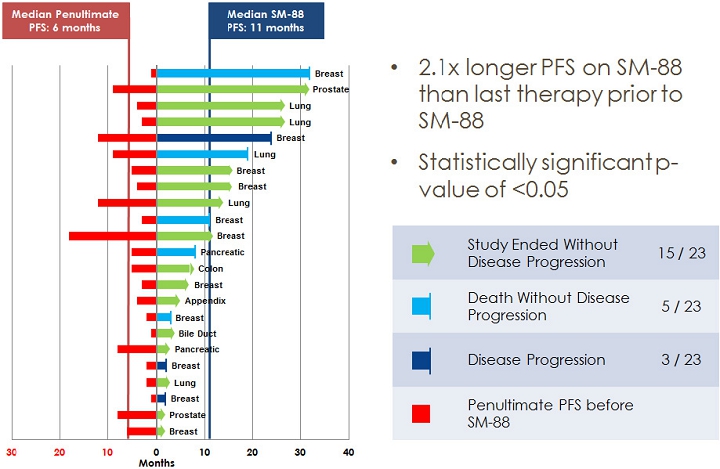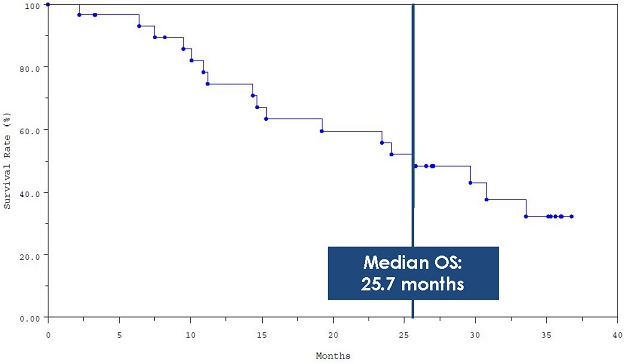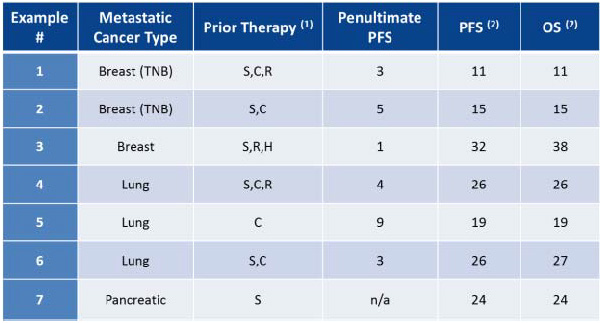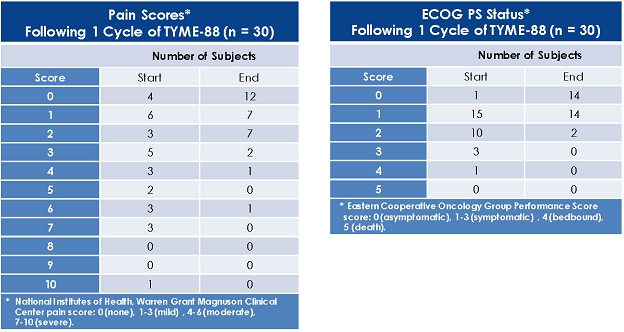Investors in the March 2017 Private Placement have limited anti-dilution protection. This provision provides that if the Company were to raise certain funds before the Anti-dilution Expiry Date (defined below) at an effective average consideration and/or exercise or conversion price per share price less than $2.55 per share, subject to exceptions for issuances of certain “exempt securities,” anti-dilution protections could apply which could obligate the Company to issue additional securities to the March 2017 Private Placement investors. “Anti-dilution Expiry Date” means the earliest to occur of (i) the business day after we raise $10 million or more in one or more public or private offerings within six months of the applicable purchase date for the 2017 Private Placement Investors, or (ii) the six-month anniversary of the applicable purchase date for the 2017 Private Placement Investors. The provision has been accounted for as a derivative liability with a fair value of $378,600 and will be subject to remeasurement (see Note 2).
At March 31, 2017 4,496,504 common stock purchase warrants relating to securities purchase agreements were outstanding and exercisable.
The following summarizes the common stock warrant activity for the years ended March 31, 2017 and March 31, 2016:
In the course of the Company’s normal business operations, it enters into agreements and arrangements with contract service providers to assist in the performance of its research and development and clinical research activities. Substantially all of these agreements and arrangements are on an as needed basis.
On March 5, 2015, the Company entered into employment agreements with its Chief Executive Officer and Chief Operating Officer. Under these agreements, each of such two executive officers will be entitled to an annual base salary of $450,000 and such performance bonuses as the Company’s board of directors may determine, from time to time, in its sole discretion. The base salaries will be reviewed annually (commencing in 2016) by the Company’s board of directors; provided that the base salaries may not be decreased from their then current levels due to any board review. The employment agreements each have a term of five years; provided, however, that, commencing on the first anniversary of the dates of the agreements and on each anniversary thereafter, the term shall automatically be extended by one year, such that, at any time during the term of the agreement, the remaining employment term shall never be less than four years and one day. If employment is terminated by the Company without Cause or by the executive for Good Reason, the executive will be entitled to receive (i) base salary as in effect at the time of such termination to the extent such amount has accrued through the termination date and remains unpaid, (ii) any fully earned and declared but unpaid performance bonus as of the termination date, (iii) an amount equal to the sum of base salary the executive would have received from the date of such termination through the then applicable expiration date, which shall be payable in the same amounts and at the same intervals as if the employment period had not ended and (iv) any unpaid expenses as of the termination date. If the employment is terminated for “Cause,” or in the case of the executive’s death or disability, the executive will only be entitled to his base salary through the termination date, plus any accrued and unpaid performance bonus as of the termination date.
On March 15, 2017, the Company entered into a letter agreement with Ben R. Taylor, pursuant to which he became President and Chief Financial Officer of the Company effective April 3, 2017, which provides for an annual salary of $450,000 and a term which is scheduled to expire on the one-year anniversary of the effective date of the letter agreement unless earlier terminated. The letter agreement (i) could renew for an additional one-year period unless timely notice of nonrenewal is given or the letter agreement is earlier terminated, (ii) provides for severance benefits equal to six months of salary in the event of termination by the Company without “cause” or by the executive for “good reason” (as such terms are defined in the letter agreement) and (iii) contemplates the establishment of a performance bonus opportunity based upon the achievement of performance criteria and goals approved by the Board. Pursuant to the letter agreement, the Company granted to Mr. Taylor, effective March 27, 2017 (the “Grant Date”), a nonqualified stock option to Mr. Taylor, which enables Mr. Taylor to purchase up to 1,500,000 shares of Common Stock of the Company at an exercise price per share of $2.95. The Option vests in four equal annual installments on each anniversary of the Grant Date.
Legal Proceedings
Other than discussed below, the Company is not involved in any legal proceeding that it expects to have a material effect on its business, financial condition, results of operations or cash flows.
As described in Note 7, Stockholders’ Equity, the Merger Agreement further provided that, if the pre-money valuation on which the raised funds were placed into escrow was less than $200,000,000, or if no money was raised within such five month period, up to 3,500,000 shares of Company common stock were required to be surrendered for cancellation. Such 3,500,000 shares were placed into escrow pursuant to an Adjustment Shares Escrow Agreement entered into at the time of Merger Closing. The date on which the offering funds were required to be placed into escrow was extended under the terms of the Second Omnibus Amendment to November 5, 2015. No offering was consummated, nor were any offering funds placed into escrow by November 5, 2015. On November 10, 2015, the Company advised the escrow agent of such facts and demanded the surrender for cancellation of the 3,500,000 shares placed into escrow under the Adjustment Shares Escrow Agreement. Under the Adjustment Shares Escrow Agreement, the depositor of such escrowed shares had until November 18, 2015 to challenge the Company’s demand for surrender of the Escrowed Shares.
On November 17, 2015, the Company received notice from the depositor of such 3,500,000 shares disputing the grounds for the surrender for cancellation of those shares. Until resolved, by court order or otherwise, the 3,500,000 shares shall remain in escrow. In our complaint, we requested, among other things, that GEM return 3,500,000 shares to the Company that were held in escrow (the “Escrowed Shares”) pursuant to an escrow agreement executed on or about March 5, 2015 and amended on or about June 5, 2015, under which CKR was the escrow agent and held the Escrowed Shares.
On January 19, 2016, the Company filed a complaint against the depositor with the Commercial Division of the Supreme Court of New York, New York and on April 1, 2016, the Company filed an amended complaint, which asserts causes of actions for (i) a declaratory judgment declaring that the relevant contracts require the 3,500,000 escrowed Adjustment Shares to be released to the Company; (ii) breach of contract for failure to deliver the 3,500,000 escrowed Adjustment Shares to the Company; (iii) conversion for the depositors willful and malicious interference with the Company’s rights to the Adjustment Shares; and (iv) replevin for the escrow agent’s refusal to surrender the escrowed Adjustment Shares to the Company.
On February 28, 2017, we, GEM Global Yield Fund LLC SCS (on behalf of it and its affiliates, collectively, “GEM”), and CKR Law LLP (“CKR”) entered into a Confidential Settlement and Release Agreement (the “Settlement Agreement”) with respect to, among other things, (a) our complaint filed on or about January 19, 2016 and amended on April 1, 2016 against GEM with the Commercial Division of the Supreme Court of New York, New York (the “Court”) captionedTyme Technologies, Inc. v. GEM Global Yield Fund LLC SCS and CKR Law LLP, Index No. 650250/2016, (b) GEM’s counterclaims asserted against us on or about June 20, 2016 as set forth in CKR’s and GEM’s answer to the Company’s complaint and (c) a Registration Rights Agreement involving the Company and GEM (the “RRA”), a form of which was filed as Exhibit 10.9 to the Company’s Current Report on Form 8-K filed with the Securities and Exchange Commission on March 11, 2015.
Pursuant to the Settlement Agreement, GEM directed CKR to surrender to the Company the Escrowed Shares. The Company is not obligated to pay any monetary damages pursuant to the Settlement Agreement. In addition to the foregoing, the Company and GEM agreed to waive and release any claims they may have against each other with respect to the subject matter of the complaint and counterclaim described above. The parties also agreed to terminate the RRA. On March 1, 2017, the Company received the Escrowed Shares. The Company and the depositor also entered into a Stipulation of Discontinuance with Prejudice that was filed with the Court on March 2, 2017.
- 100 -
Note 9. Related Party Transactions.
Due from Stockholders/Members
Effective as of the consummation of and in anticipation of the Merger, the non-interest bearing advances made to such stockholders/members was settled by the bonus compensation payments of $342,250 payable to such stockholders being retained by the Company in lieu of payment. The balance of $13,516 was settled during March 2015 by personal reimbursement made by the stockholders to the Company.
Sale of Excess Ingredient Materials
During the three months ending March 31, 2016, Steve Hoffman, the Company’s President and Chief Executive Officer, purchased excess ingredient materials from the Company for a cost of $170,000, which was the pro rata cost of obtaining the items. The income from this was recorded as an offset to Research and Development expense on the consolidated statements of operations, where the cost of such materials was originally recorded.
Legal
The Company was provided legal service by Drinker, Biddle & Reath LLP (“DBR”). A partner of DBR is a Board of Director member and received, and is entitled to receive, equity compensation payable to non-employee directors generally under the 2016 Director Plan. See note 10 below concerning the 2016 Director Plan. During the year ending March 31, 2017, the three months ended March 31, 2016 and 2015 (unaudited), and the years ended December 31, 2015 and 2014, approximately $1,477,000, $111,000, $0, $0, and $0, respectively, have been incurred as legal expenses associated with DBR, and the Company had approximately$1,303,000 and $94,000 in accounts payable and accrued expenses payable to DBR at March 31, 2017 and March 31, 2016, respectively.
Note 10. Equity Incentive Plan.
On March 5, 2015, the Company’s Board of Directors adopted and the Company’s stockholders approved, the Company’s 2015 Equity Incentive Plan (the “2015 Plan”). A reserve of 10,000,000 shares of Company common stock has been established for issuance under the 2015 Plan. No more than an aggregate of 3,333,333 shares of common stock may be awarded during the twelve month period starting March 5 of each succeeding year. Awards under the 2015 Plan may include, but need not be limited to, one or more of the following: options, stock appreciation rights, restricted stock, performance grants, stock bonuses, and any other type of award deemed by the administrator to be consistent with the purposes of the 2015 Plan. The exercise price of all options awarded under the 2015 Plan must be no less than 100% of the fair market value of the Company common stock as determined on the date of the grant and have a term of no greater than ten years from the date of grant. As of March 31, 2017, there were 5,832,718 shares available for grant under the 2015 Plan.
On May 9, 2016, the Board approved the establishment of a stock option plan for non-executive members of the Board (the “2016 Director Plan”), which includes: (i) (A) for current members, an immediate stock option grant of 25,000 shares at fair market value (as defined in the 2016 Director Plan to generally mean the closing stock price per share on the date of grant); or (B) for future members initially appointed, an immediate stock option grant of 25,000 shares at fair market value; and (ii) beginning with the 2017 annual meeting, for members who are reelected as members of the Board, an annual stock option grant of 10,000 shares at fair market value. Each of these stock option awards will vest 50% on the date of grant and 50% on the first anniversary of the date of grant. These stock option awards are in addition to the annual payment of $50,000 in cash fees to non-employee directors.
Stock Options
As of March 31, 2017, there was approximately $13,375,000 of total unrecognized compensation related to non-vested stock options. The cost is expected to be recognized over the remaining weighted average remaining service period of four years.
During the year ended March 31, 2017, the three months ended March 31, 2016 and 2015 (unaudited), and the year ended December 31, 2015 and 2014, approximately $7,725,000, $1,137,000, $0, $811,000, and $0, respectively, have been recognized as stock based compensation. During the year ended March 31, 2017, the three months ended March 31, 2016 and 2015 (unaudited), and the year ended December 31, 2015 and 2014, approximately $5,100,000, $1,137,000, $0, $811,000, and $0 have been recognized in general and administrative expense. During the year ended March 31, 2017 approximately $2,625,000 have been recognized in research and development expense. There was no such expense recorded in research and development expense for the three months ended March 31, 2016 and 2015 (unaudited), and the years ended December 31, 2015 and 2014.
- 101 -
The Company uses the Black-Scholes option pricing model to determine the fair value of stock options granted. In accordance with ASC 718 for employees, the compensation expense is amortized on a straight-line basis over the requisite service period, which approximates the vesting period.
The expected volatility of options granted has been determined using the method described under ASC 718 using the expected volatility of similar companies. The expected term of options granted to employees in the current fiscal period has been based on the contractual term of the agreement as prescribed by ASC 718 Share-Based Payment.
The assumptions utilized to estimate the fair value of stock options granted are presented in the following table:
| | | | | | | | | | | |
| | Year Ended | | Three Months Ended March 31, | | Year Ended | |
| | March 31, | | | | 2015 | | December 31, | |
| | 2017 | | 2016 | | (Unaudited) | | 2015 | | 2014 | |
Risk free interest rate | | 1.57% - 2.49% | | 1.4% | | N/A | | 1.65% | | N/A | |
Expected volatility | | 80.74% - 92.33% | | 79.0% | | N/A | | 82.9% | | N/A | |
Expected term | | 5 - 10 years | | 5 years | | N/A | | 5 years | | N/A | |
Dividend yield | | 0.0% | | 0.0% | | N/A | | 0.0% | | N/A | |
The following is a summary of the activity of the Company’s stock options under the 2015 Plan and 2016 Director Plan as of March 31, 2017:
| | | | |
| Number of Options | | Weighted Average Exercise Price |
Outstanding at March 31, 2016 | 350,000 | | $ | 9.61 |
Granted | 4,045,000 | | $ | 6.19 |
Exercised | — | | $ | — |
Forfeited/Cancelled | (355,556 | ) | $ | 10.02 |
Outstanding at March 31, 2017 | 4,039,444 | | $ | 6.15 |
Options exercisable at March 31, 2017 | 1,346,389 | | $ | 7.56 |
Weighted-average grant date fair value of options granted during the year ended March 31, 2017 is $5.34.
| | | | | | | | | | | | | | | | | |
| | Stock Options Outstanding | | Stock Options Vested | |
Range of Exercise Price | | Number Outstanding at March 31, 2017 | | Weighted Average Exercise Price | | Weighted Average Remaining Life (Years) | | Aggregate Intrinsic Value | | Number Vested at March 31, 2017 | | Weighted Average Exercise Price | | Weighted Average Remaining Life (Years) | | Aggregate Intrinsic Value | |
$1.93 - $7.75 | | 4,039,444 | | $6.15 | | 9.25 | | $16,000 | | 1,346,389 | | $7.56 | | 8.51 | | $16,000 | |
The intrinsic value is calculated as the excess of the market value of March 31, 2017 over the exercise price of the options is approximately $16,000. The market value as of March 31, 2017 was $2.88 as reported by the OTC Market, Inc.
Stock Grants
On March 10, 2015, the Company adopted an independent director compensation policy and also adopted a compensation policy with respect to a special advisor to the Company’s board of directors. Under such independent director compensation policy, each of those directors meeting the NASDAQ stock market definition of independent director is entitled to receive annual compensation in the amount of $100,000, one-half to be paid in cash on a quarterly basis, in arrears, and the remaining one-half of the compensation to be paid in the form of Company common stock on a quarterly basis, in arrears, with the shares valued at the closing sale price of the Company common stock on the last trading day of the applicable quarterly period. The special advisor at such time was being compensated in the same manner as the independent directors. Effective as of September 30, 2015, the Company established a Scientific and Medical Advisory Board and a compensation policy for the advisory board’s members, substantially identical to the compensation policy described above in this paragraph for the Company’s independent directors, was adopted. In May 2016, the Company replaced the stock component of the previous independent director compensation policy with the 2016 Director Plan and the Company likewise has determined to extend similar awards to the special advisor and members of the Scientific and Medical Advisory Board.
- 102 -
The Company’s compensation expense for stock awards was $112,500, $100,000, $50,000, $325,000 and $0 for the years ended March 31, 2017, three months ended March 31, 2016 and 2015 (unaudited), and the year ended December 31, 2015, and 2014, respectively. The accrued expense for stock awards earned but not yet issued is $112,500 and $100,000 at March 31, 2017 and March 31, 2016, respectively.
The Company’s compensation expense for cash awards was $262,500, $100,000, $50,000, $325,000 and $0 for the years ended March 31, 2017, three months ended March 31, 2016 and 2015 (unaudited), and the year ended December 31, 2015 and 2014, respectively. The accrued expense for cash awards was $375,000 and $237,500 at March 31, 2017 and March 31, 2016, respectively.
Note 11. Income Taxes.
The Company provides for income taxes under ASC 740. Under ASC 740, the liability method is used in accounting for income taxes. Under this method, deferred tax assets and liabilities are determined based on differences between financial reporting and tax bases of assets and liabilities, and are measured using the enacted tax rates and laws that will be in effect when the differences are expected to reverse.
The Company has not recorded a current or deferred income tax expense or benefit since its inception.
The Company’s loss before income taxes was $15,206,781, $2,751,127, $5,601,438, $11,726,818, and $2,660,677 for the year ended March 31, 2017, three months ended March 31, 2016 and 2015 (unaudited), and year ended December 31, 2015 and 2014, respectively, and was generated entirely in the United States.
Deferred taxes are recognized for temporary differences between the basis of assets and liabilities for financial statement and income tax purposes. The significant components of the Company’s deferred tax assets are comprised of the following:
| | | | | | | | | | | | | | | | |
| | Year Ended | | Three Months Ended March 31, | | Year Ended | |
| | March 31, | | | | 2015 | | December 31, | |
| | 2017 | | 2016 | | (Unaudited) | | 2015 | | 2014 | |
Net operating loss carryforward | | $ | 5,747,394 | | $ | $4,443,724 | | $ | $1,730,737 | | $ | 4,316,110 | | $ | 1,330,660 | |
Research and development credit carryforward | | | 310,727 | | | 238,449 | | | — | | | 198,490 | | | — | |
Stock options - NQSOs | | | 3,178,381 | | | — | | | — | | | — | | | — | |
Accruals | | | 803,242 | | | 142,640 | | | — | | | — | | | — | |
Other temporary differences | | | 6,568 | | | 6,878 | | | (3,702 | ) | | 62,928 | | | — | |
Gross deferred tax assets | | | 10,046,312 | | | 4,831,691 | | | 1,727,035 | | | 4,577,528 | | | 1,330,660 | |
Deferred tax valuation allowance | | | (10,046,312 | ) | | (4,831,691 | ) | | (1,727,035 | ) | | (4,577,528 | ) | | (1,330,660 | ) |
Net deferred taxes | | $ | — | | $ | — | | $ | — | | $ | — | | $ | — | |
The Company has evaluated the positive and negative evidence bearing upon the realizability of its deferred tax assets. Based on the Company’s history of operating losses since inception, the Company has concluded that it is more likely than not that the benefit of its deferred tax assets will not be realized. Accordingly, the Company has provided a full valuation allowance for deferred tax assets as of March 31, 2017. The valuation allowance increased by $5,214,621 for the period April 1, 2016 through March 31, 2017 due primarily to the generation of net operating losses during the period and filing in additional jurisdictions.
A reconciliation of income tax benefit computed at the statutory federal income tax rate to income taxes as reflected in the financial statements is as follows:
- 103 -
| | | | | | | | | | | | |
| | Year Ended | | Three Months Ended | | Year Ended | |
| | March 31, | | March 31, | | December 31, | |
| | 2017 | | 2016 | | 2015 | | 2015 | | 2014 | |
U.S. statutory income tax rate | | 34 | % | 34 | % | 34 | % | 34 | % | 35.0 | % |
State income taxes, net of federal benefit | | — | | 4.9 | | 6.0 | | 7.9 | | 5.0 | |
Stock options | | — | | (14.1 | ) | — | | — | | — | |
Permanent differences | | — | | — | | — | | (12.8 | ) | — | |
Non-deductible transaction costs | | — | | — | | (6.0 | ) | — | | — | |
Bond premium on repurchase | | — | | — | | (20.0 | ) | — | | — | |
Tax rate change | | (5.4 | ) | (21.7 | ) | — | | — | | — | |
Provision to return true-up | | 7.3 | | 15.6 | | (7.0 | ) | 8.0 | | — | |
R&D credit carryforwards | | 0.8 | | 1.5 | | — | | 1.8 | | — | |
Valuation allowance | | (36.7 | ) | (20.2 | ) | (7.0 | ) | (38.9 | ) | (40.0 | ) |
Effective tax rate | | — | % | — | % | — | % | — | % | — | % |
As of March 31, 2017, the Company had U.S. federal net operating loss carryforwards of $16,904,097 net of uncertain tax positions, which may be available to offset future income tax liabilities and will begin to expire at various dates starting in 2033. As of March 31, 2017, none of the Company’s state net operating losses have value due to the apportionment rule in the states where state income tax returns are currently filed. . As of March 31, 2017, the Company had federal research and development tax credit carryforwards of $310,727, available to reduce future tax liabilities which will begin to expire at various dates starting in 2030.
Under the provisions of the Internal Revenue Code, the NOL carryforwards are subject to review and possible adjustment by the Internal Revenue Service and state tax authorities. NOL and tax credit carryforwards may become subject to an annual limitation in the event of certain cumulative changes in the ownership interest of significant stockholders over a three-year period in excess of 50%, as defined under Sections 382 and 383 of the Internal Revenue Code of 1986, as amended, as well as similar state tax provisions. This could limit the amount of NOLs that the Company can utilize annually to offset future taxable income or tax liabilities. The amount of the annual limitation, if any, will be determined based on the value of the Company immediately prior to the ownership change. Subsequent ownership changes may further affect the limitation in future years. The Company has completed several financing transactions since its inception which may have resulted in a change in control as defined by Sections 382 and 383 of the Internal Revenue Code, or could result in a change in control in the future.
A reconciliation of the beginning and ending amount of unrecognized tax benefits is as follows:
